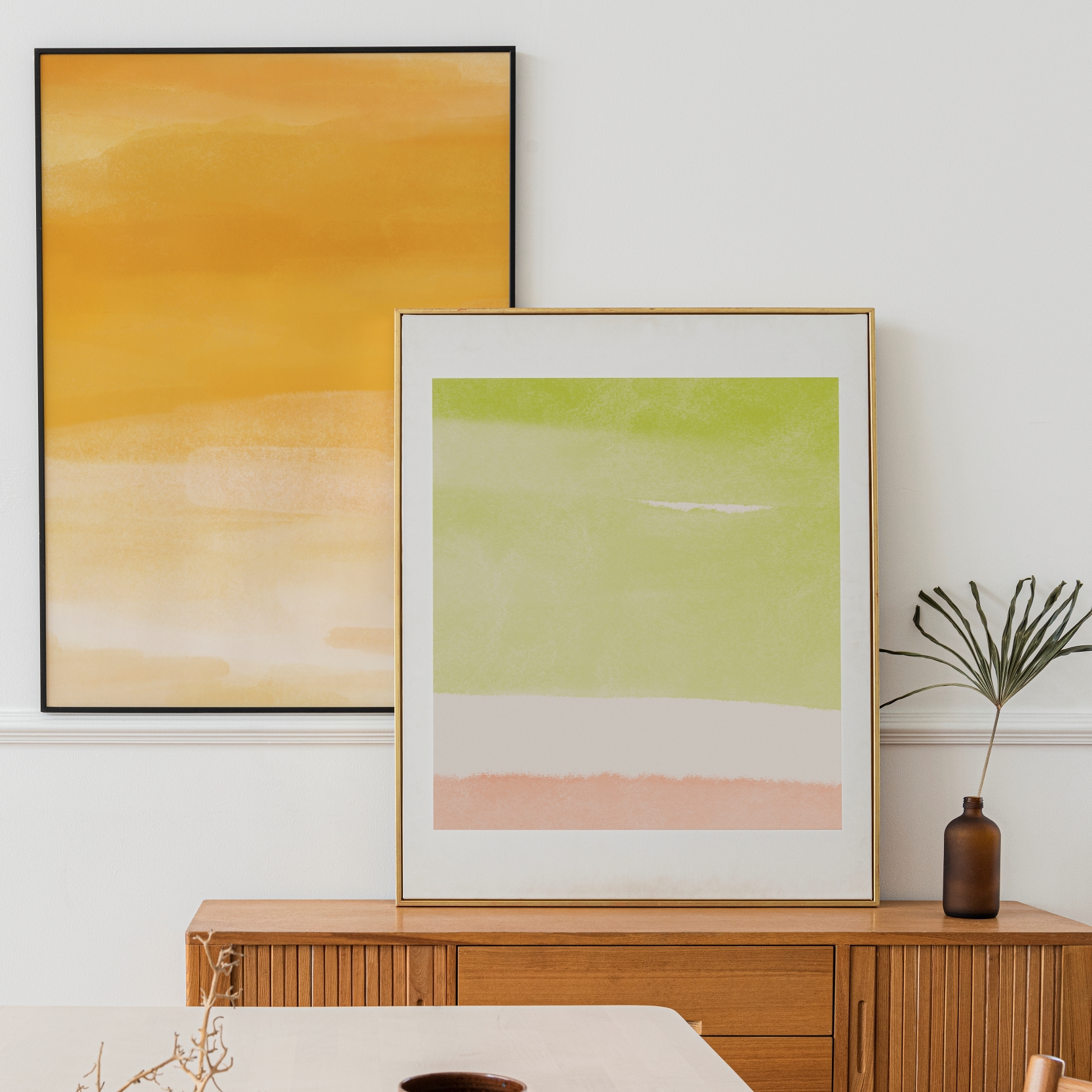Artwork is more than decoration; it’s a connection to memories, stories, and sometimes even heritage. Whether it’s a cherished family portrait or an investment piece by a renowned artist, protecting artwork from environmental damage is critical to its longevity.
Often, homeowners overlook how the conditions in their homes can silently degrade their art, leading to irreversible harm. Let’s explore six environmental factors that can ruin artwork and how to address them.
#1 Humidity
Humidity is one of the most insidious threats to artwork. When moisture levels in the air fluctuate, organic materials like paper, canvas, and wood expand and contract. Over time, this can cause warping, cracking, or discoloration in paintings and prints.
High humidity can also encourage mold growth, leaving unsightly marks on your pieces and potentially damaging them beyond repair. Such growth can also lead to discoloration, staining, and degradation of the piece, making it lose its monetary and artistic value.
In homes without climate control, the battle against humidity is constant. Coastal areas or regions with frequent rainfall are particularly challenging for art preservation. Dehumidifiers and air conditioners are your best allies, especially in rooms where your most valuable pieces are displayed.
How do you protect artwork from humid conditions?
To protect artwork from humid conditions, control the environment with consistent temperature and humidity levels, ideally around 50 percent relative humidity. Use a dehumidifier and keep artwork away from damp areas or direct exposure to moisture. Frame pieces with archival-quality materials and UV-protective glass to shield them further. Regular inspections help catch early signs of damage like mold or warping.
#2 Sunlight
Natural light brings life to a room, but it’s no friend to artwork. Prolonged exposure to sunlight causes colors to fade and can make once-vivid paintings appear dull and lifeless. UV rays are especially harmful, breaking down pigments and fibers in canvases, textiles, and photographs. Watercolor paintings, in particular, are susceptible to such damage.
How do you protect artwork from sunlight exposure?
Positioning artwork away from windows is a simple solution, but in cases where that’s not possible, UV-blocking glass or film can help mitigate damage. Curtains and blinds can also act as a shield during the brightest parts of the day.
#3 Temperature Fluctuations
Like humidity, temperature changes can wreak havoc on artwork. Extreme heat can dry out paint, making it brittle and prone to cracking, while cold temperatures can stiffen and distort materials. The cycle of heating and cooling as the seasons change is particularly damaging.
Homes with inconsistent heating systems or poorly insulated walls often create unstable environments for art. A stable room temperature, ideally around 70 degrees Fahrenheit, is essential for preserving pieces, especially those made of mixed media or fragile materials.
#4 Asbestos
While many people associate asbestos with health risks, few realize its potential to affect artwork. Asbestos, once a common building material, can deteriorate over time, releasing harmful fibers into the air. These fibers can settle on artwork, embedding themselves in delicate surfaces and causing discoloration or abrasion.
The presence of asbestos in a home isn’t just a threat to art but also to health. As noted by TorHoerman Law, prolonged exposure can lead to asbestosis, a chronic lung disease, and other severe conditions.
Homeowners dealing with health problems from asbestos often find themselves pursuing an asbestos lawsuit to cover medical expenses and abatement costs. The asbestos lawsuits highlight the negligence of companies that produced these materials despite knowing their risks.
To protect your artwork, professional asbestos removal is essential if your home was built before the 1980s. Attempting to handle asbestos-containing materials yourself is dangerous and illegal in many jurisdictions. Trained professionals can safely remove or encapsulate the material, ensuring that neither your health nor your art collection suffers.
How much do you have to spend to test if your house has asbestos or not?
The average US homeowner shells out around $483 for an asbestos test. However, the price can vary depending on where you live. You’re looking at a range of about $231 to $778.
#5 Airborne Pollutants and Dust
Airborne particles might seem harmless, but over time, they can settle on artwork and cause degradation. Dust, soot, and even cooking fumes can leave residues on surfaces, affecting the vibrancy and texture of a piece.
Homes near industrial areas or heavy traffic zones face higher risks due to pollutants in the air. Using air purifiers and keeping artwork in rooms with less traffic can help reduce exposure. Regular cleaning by a professional conservator ensures that residues are removed without causing further harm.
#6 Pests
Insects and rodents may seem like an odd threat to artwork, but they can be surprisingly destructive. Termites, silverfish, and moths are notorious for feeding on paper and wood, while rodents may gnaw on frames for nesting purposes.
Homes with clutter or poor storage conditions are more prone to pest infestations. Regular inspections and sealing cracks or gaps in walls can help prevent pests from entering.
For existing infestations, pest control measures should be applied carefully, as harsh chemicals can also harm artwork. Once pests are eradicated, thorough cleaning and proper framing with protective materials can deter future invasions.
The beauty of artwork lies not only in its aesthetic value but also in its ability to transcend time and evoke emotions across generations. Yet, this longevity depends on how well it’s protected from environmental threats.
From controlling humidity and temperature to addressing serious hazards like asbestos, safeguarding your art collection requires a proactive and informed approach.
A home that nurtures artwork is one that pays attention to the subtle interplay between environment and preservation. Creating the right conditions ensures your art remains as vibrant and meaningful as the day it first caught your eye.
